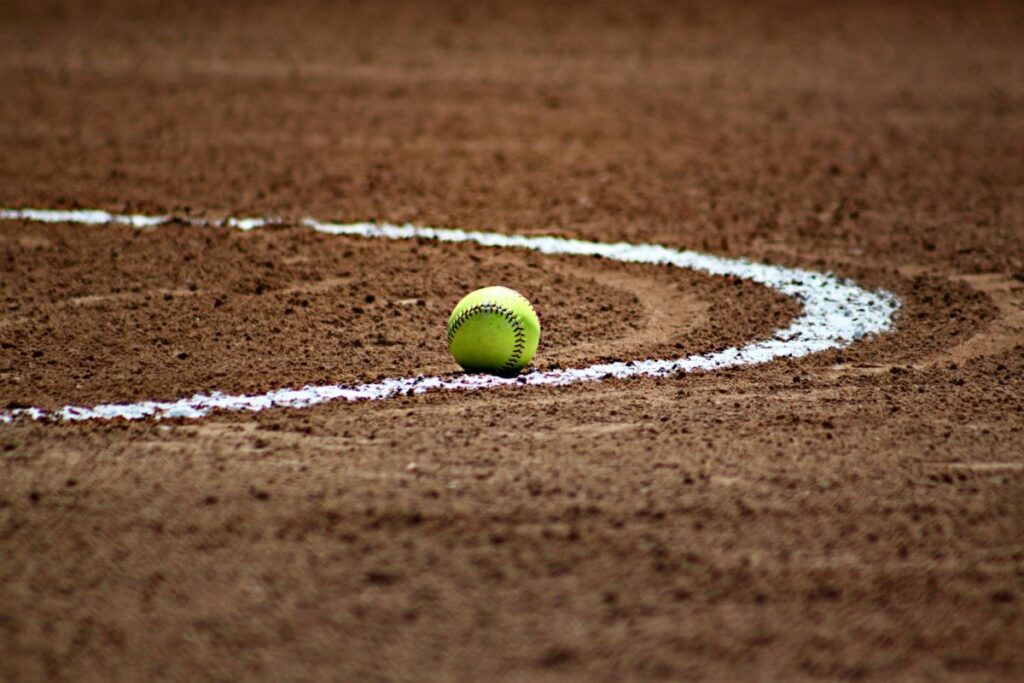While both spheres used in bat and stick sports, cricket balls and softballs have distinct qualities in materials, size, weight, manufacture, cost, ideal conditions and overall specifications.
Here are 11 ways cricket balls differ from softballs:
- Weight – Cricket balls weigh 5.5-5.8 oz, softballs 6-7 oz.
- Size – Cricket balls have a 2.8-2.9 in diameter, softballs 3.8-5 in.
- Bounce – Cricket balls bounce moderately, softballs have a dead bounce.
- Materials – Cricket uses cork/leather, softballs synthetic leather covers.
- History – Cricket balls from 1600s England, softballs from 1880s origins.
- Speed – Cricket bowls up to 100 mph, softballs under 75 mph pitched.
- Spin – Cricket balls swing and seam, softballs minimal spin.
- Records – Fastest cricket bowl 161.3 km/h, softball pitch 83 mph.
- Brands – Kookaburra, Dukes famed for cricket balls; Dudley leads softballs.
- Storage – Cricket balls deteriorate over time, softballs retain properties longer.
- Cost – Pro cricket balls $100+, softballs $20+ retail normally.
Below we’ll detail their specialized designs to appreciate how cricket and softballs are precisely engineered for their respective sports’ demands!

Difference in Weight
Cricket balls weigh between 5.5-5.8 oz, slightly lighter than softballs which range from 6-7 oz depending on league specifications.
The cricket ball’s lighter weight helps generate speed off the bat. The heavier softball has more momentum carrying through the air and on hits.
I noticed the heft difference immediately holding a softball after being used to featherlight cricket balls.
Difference in Size
Standard cricket balls have a diameter around 2.8-2.9 inches. Larger softballs measure 3.8-5 inches across, almost double a cricket ball.
The bigger softball dimension contributes to the heavier weight and ease of contact from the larger hitting surface. Cricket’s compact size challenges hand-eye coordination.
Difference in Bounce
Cricket balls have a firm, low bounce on the pitch from their layered cork interior and leather casing.
Softballs undergo minimal bounce due to the dense core. The ball loses much energy on impact.
So cricket balls retain their shape after bouncing, while softballs go dead off the bat or when pitched.
Difference in Materials
Cricket balls have a cork interior layered with string windings, bound in a leather casing. Softballs feature composite or rubber pill cores with leather or synthetic leather covers.
The cricket ball’s layers create a hardy yet lively sphere optimized for bat strokes and fielding. Softballs prioritize a durable cover over the core to cushion hits.
Each material suits each sport’s unique demands.
History of Ball Types
Cricket balls originated from wood spheres in England in the early 1600s. The current standard emerged in the late 1700s.
Early softballs developed as indoor baseballs in the 1880s before larger softballs emerged outdoors in the 1930s.
So cricket balls uphold artisanal heritage, while softballs evolved as a recreational alternative to baseballs.
Speed They Travel
The fastest cricket bowls exceed 90-100 mph from elite fast bowlers. The ball weight prevents extraordinarily high speeds.
Well-struck softballs typically travel under 75 mph whether pitched or hit. The greater mass reduces speed potential.
So cricket balls edge out softballs for speed capability off the bat or arm.
How Fast is a Bowl/Pitch?
- Top cricket bowlers reach average speeds between 70-90 mph using pure arm strength.
- Softball pitchers average 40-60 mph on the mound. Hitters generate ball speeds around 70 mph.
So cricket bowlers rely on more upper body speed rather than the pitching motion.
World Records
- Fastest cricket bowl: 161.3 km/h or 100.2 mph by Shoaib Akhtar
- Fastest softball pitch: 83 mph by Eddie Feigner
The cricket bowl record bests softball’s fastest pitch by over 20 mph – a substantial velocity gap.
Brand Popularity
For cricket, Kookaburra and Dukes make premiere English willow balls for top matches.
In softball, Dudley and Worth lead manufacturing. Brands like Wilson also offer quality softballs.
Each sport has recognized names known for optimized balls.
Storage and Care
Cricket balls gradually lose their dynamic properties as the materials deteriorate over seasons of use.
Softballs also slowly degrade but at a slower rate if protected from direct surface abrasion and temperature extremes during storage.
So softballs have a slight durability advantage if maintained properly over time.
Cost Considerations
Top tier cricket balls are handcrafted and cost $100+ each for pro performance quality assurance.
High-grade softballs retail around $20+ individually, reflecting easier large-scale production.
The specialized cricket manufacturing requires a far higher price point.
In summary, while sharing a ball shape, cricket balls and softballs feature specialized materials, sizes, weights and constructions precisely engineered to meet the unique gameplay demands and environments of each sport.
